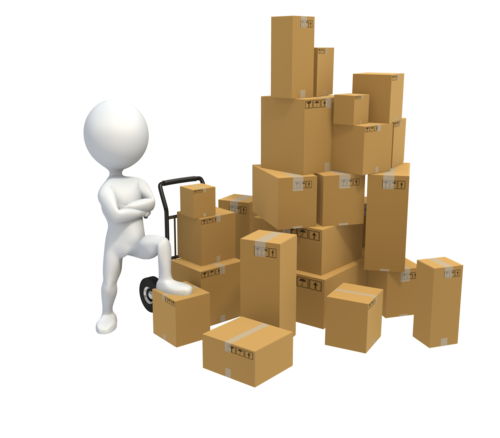Logistics is often visible through inventory and trucks doing transportation. Today we will talk about the importance of a good inventory control and its management, the different types of inventories and the costs that are associated with them.
What is inventory?
Inventories are products or goods held for future use. These products that make up the inventory can be from raw materials, supplies, semi-finished products, in preparation, or final products.
Inventories are not always negative. As we have seen, they serve to satisfy customers who are looking for products at a different location and time from where the product was manufactured.
The important thing is to know how to do better with less inventories!
Costs associated with inventories
Inventory costs can account for 50% of production costs, and there are many pressures to reduce inventories: competitors, better logistics integration, just-in-time systems, …
Many invisible costs are associated with inventory control and management. For example, how to correctly account for the manipulation of products by employees, space in inventory, heating, lighting, equipment, insurance, obsolescence, losses due to breaks and/or thefts, etc.?
Types of inventories
There are several types of inventories, and being able to identify and measure each one of them is essential for a good management!
– Raw materials: these are products to be processed. For example, a company that produces bicycles will buy the raw material aluminum to make the frames;
– Components: these are purchased and placed in the final product without transformation. If aluminum was the raw material of the frames, the company can buy the tires as final products; the tires are therefore components;
– Supplies: office and cleaning supplies, for example;
– Semi-finished products: they are those assembled in parts, to be placed in the final product. For example, the handlebar of a bicycle can be assembled separately, being a semi-finished product;
– Replacement parts: the name says it all. Examples may be the tires or bicycle chains;
– Final products: our bike!
Objectives of inventory control
After all, companies want to make a profit. Therefore, inventory control should contribute to a good return on invested capital.
In addition, inventory should facilitate the production planning, satisfy the customer by providing a good service level, and avoid excesses or lack of inventory.
Because inventory levels depend on the size of production lots, it is important to clearly understand the best size of the lots to be manufactured (or ordered).
Therefore, we should be able to answer the following questions:
How many units we should manufacture and where we should produce them?
How many items we should buy and when we should place this order?
The answers to these and other questions will come with the study of the economic order quantity and economic production quantity. But this is a subject to another post here on EasyLogistics.site. Stay tuned!
